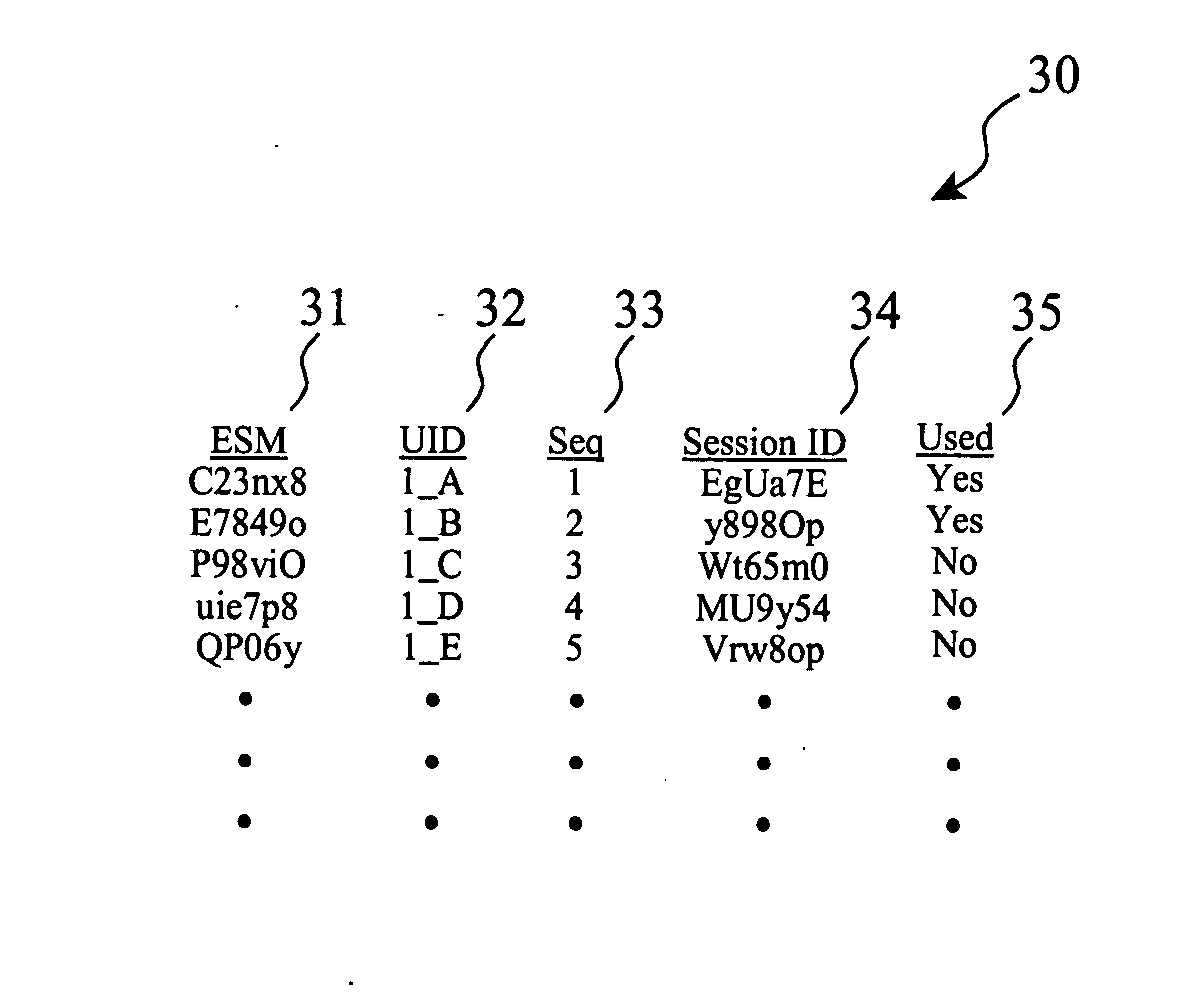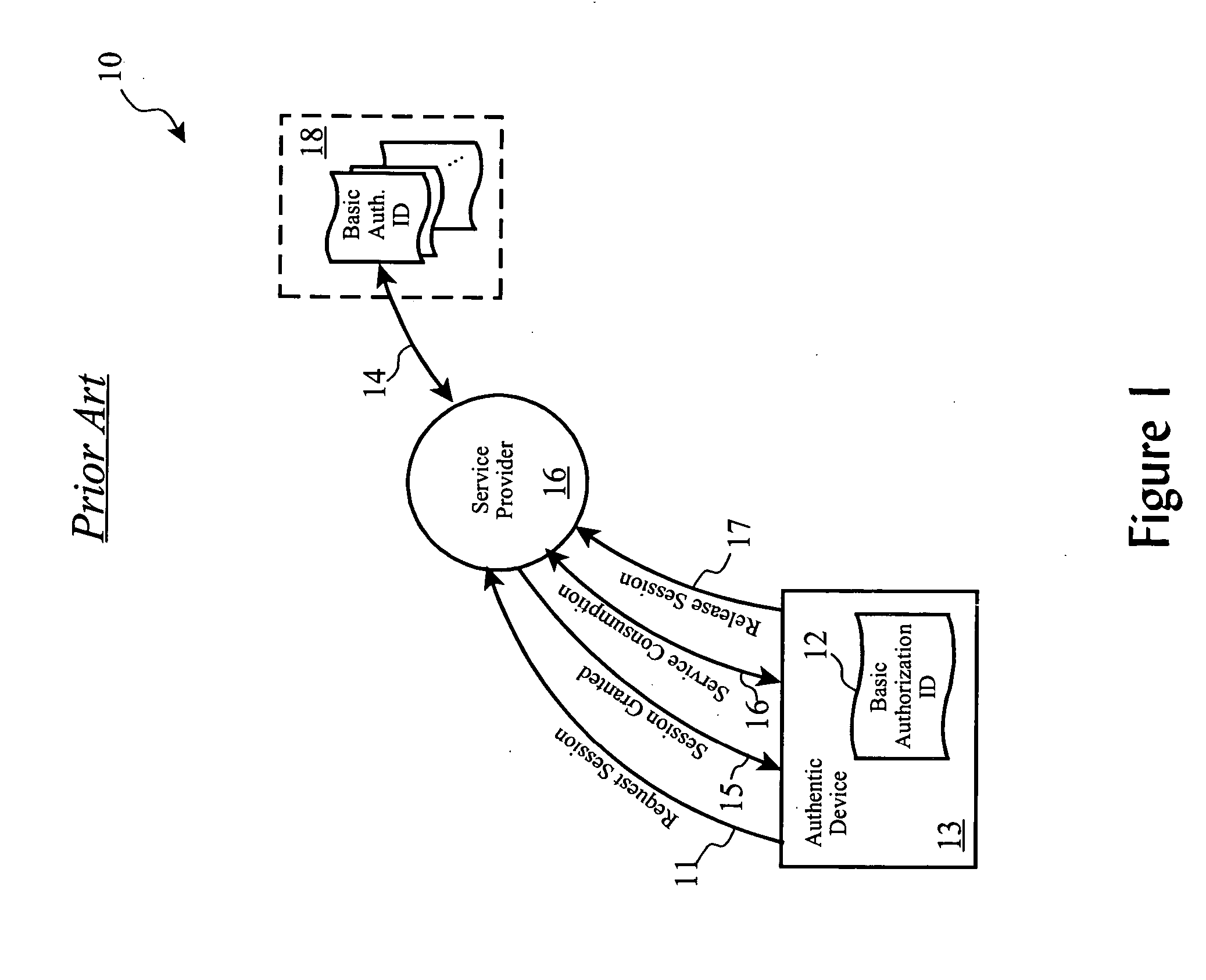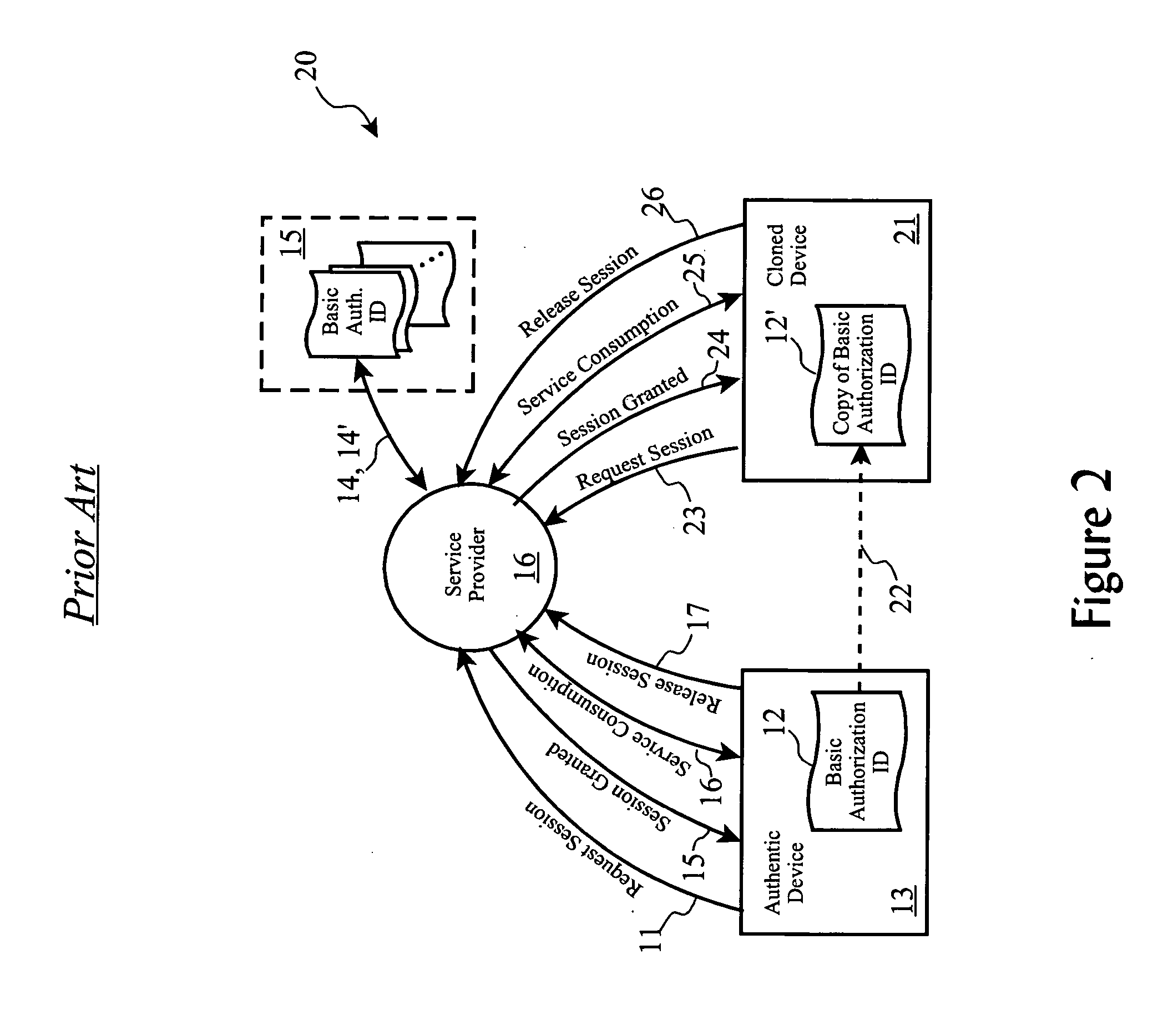Replaceable sequenced one-time pads for detection of cloned service client
a service client and one-time pad technology, applied in the direction of lock-out/secrecy provision, wireless communication, eavesdropping prevention circuit, etc., to achieve the effect of discouraging and reducing illegal cloning activities, rapid detection, and reducing service billing usag
- Summary
- Abstract
- Description
- Claims
- Application Information
AI Technical Summary
Benefits of technology
Problems solved by technology
Method used
Image
Examples
Embodiment Construction
[0060] The present invention, referred to as Rapid Clone Detection / Authentic Device Reauthorization (“RCD / ADR”) employs one-time pad (“OTP”) cryptology in combination with a personal identification number (“PIN”) or other user-driven authorization processes, in conjunction with processes to automatically detect the operation of a cloned device, automatically disabling the cloned device and the authentic device, and automatically re-authorizing the authentic device, with minimal effort or cooperation by the user of the authentic device. This invention is clearly distinct from previously employed or proposed methods through our use of one time pads to wrap session or other information which is not provided by these previous approaches. For example, the USECA UMTS process proposed use of one time codes, which has certain problems and vulnerabilities, as previously discussed.
One-Time Pads
[0061] OTP cryptology approaches require that both ends of a sender—receiver relationship share a...
PUM
 Login to View More
Login to View More Abstract
Description
Claims
Application Information
 Login to View More
Login to View More - R&D
- Intellectual Property
- Life Sciences
- Materials
- Tech Scout
- Unparalleled Data Quality
- Higher Quality Content
- 60% Fewer Hallucinations
Browse by: Latest US Patents, China's latest patents, Technical Efficacy Thesaurus, Application Domain, Technology Topic, Popular Technical Reports.
© 2025 PatSnap. All rights reserved.Legal|Privacy policy|Modern Slavery Act Transparency Statement|Sitemap|About US| Contact US: help@patsnap.com



